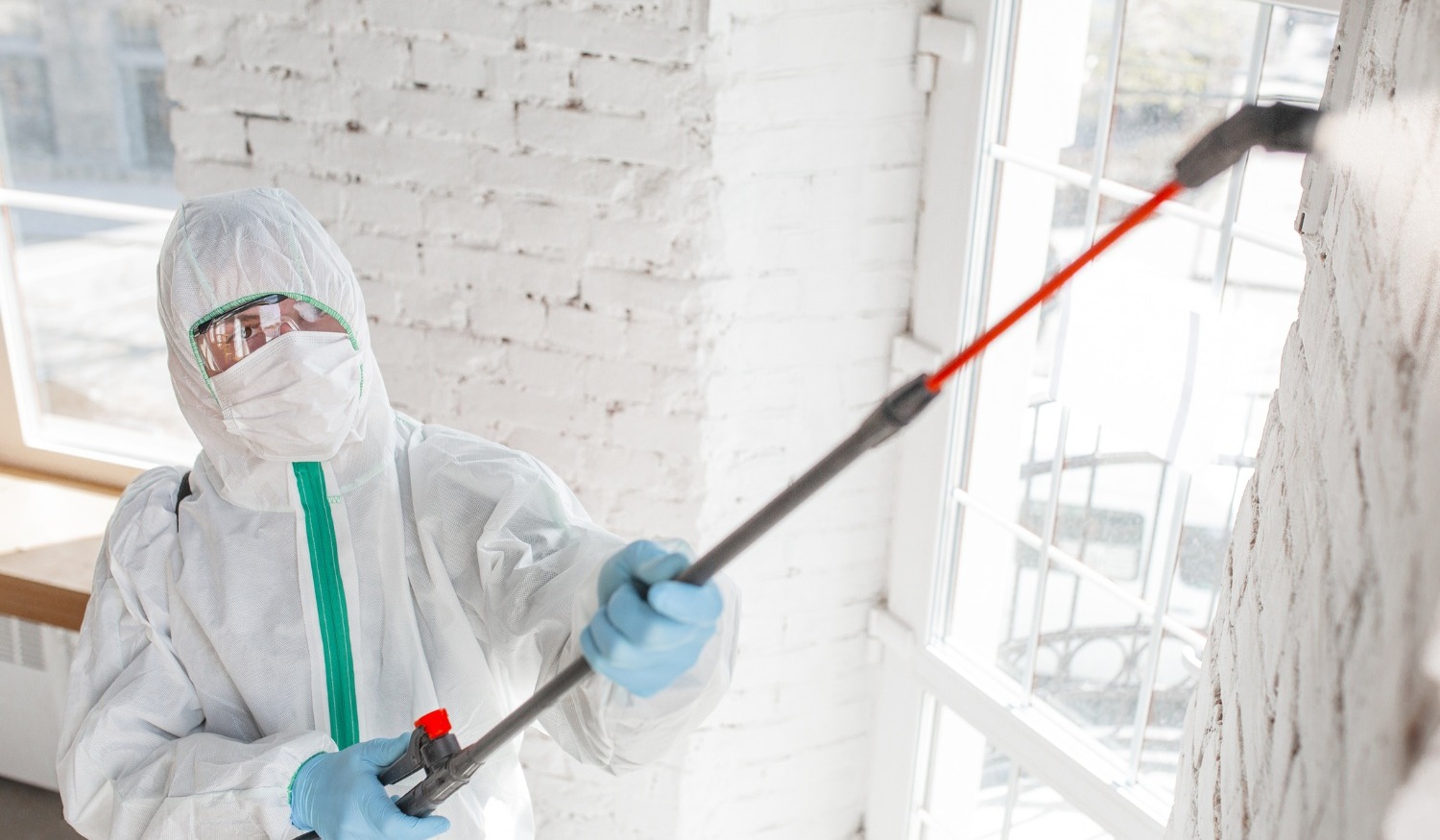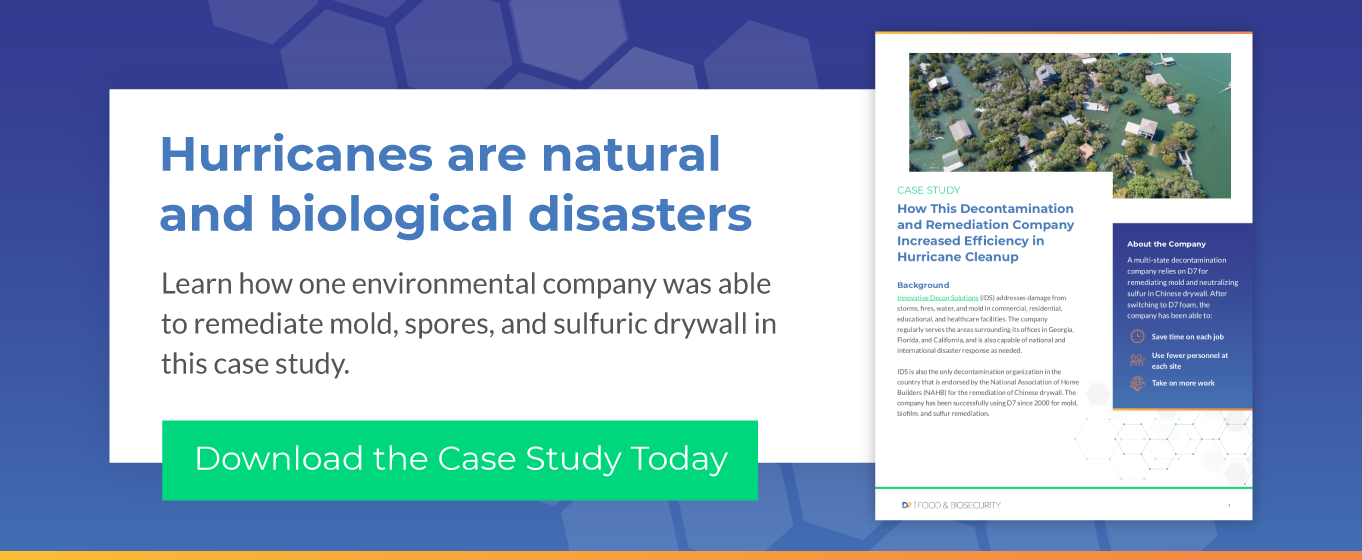
When flooding from a hurricane or other natural disaster causes property damage, people are primarily worried about the immediate aftermath, which includes replacing furniture, dealing with insurance claims, and so on. Meanwhile, mold is growing on surfaces inside the building, both in plain sight and hidden from view.
Unfortunately, replacing carpet and furnishings, scrubbing walls, and painting can only do so much. Once mold starts to grow, it can be difficult to contain. The result of this unseen, undetected mold is increased risk to the health of occupants and potential damage to new building materials.
Why Commercial Mold Remediation is Necessary
The EPA recommends professional intervention when the affected area is greater than 10 square feet. This is not a very big area, especially in the context of larger commercial buildings. What starts as a small problem can quickly evolve into a major (and expensive) issue, which is why prompt remediation is necessary. The organization also recommends that affected HVAC equipment should be handled by a professional.
Health Effects of Mold in Buildings
When mold is present in a commercial building, it can contribute to serious health consequences such as respiratory illness, asthma, sinus issues, and mold infections in lungs. The effects are compounded in public or commercial buildings with many occupants, especially those in which people spend long periods of time. The longer the problem persists, the worse the health effects can be. Remediate quickly and safely after a disaster to reduce the potential impact of mold.
Professional Products, Processes, and Equipment
Although it might be tempting to tackle a mold problem on your own, commercial mold remediation requires professional intervention for a number of reasons. In addition to providing the appropriate PPE to protect remediation teams, professionals use air quality testing equipment to determine how extreme the problem is. Without this testing, you might not fully understand the scope of your mold problem.
Professional teams address mold within walls, remove mold from HVAC systems, and test to ensure all sources of mold have been eliminated. Moisture reading equipment is also used to find potential sources of water contributing to mold growth to help prevent the problem from recurring.
Mold remediation companies also have equipment to set up a negative air flow environment to prevent cross-contamination to other areas. When it comes to mold, even a small missed area can cause regrowth to occur. Professionals use processes that ensure thorough removal.
How Commercial Mold Remediation Works
Before taking any mold removal steps, professionals assess the situation and determine what type of remediation needs to happen. Determining and eliminating the source of mold is critical. Mold needs water to grow, so figuring out where the water is located is important to prevent the issue from happening again.
After water is found, it is removed with pumps, dehumidifiers, large fans, and specialized equipment to remove remaining moisture. The affected area is sealed off, damaged materials are contained and removed, and HEPA vacuums and air scrubbers are used to eliminate airborne spores. Disinfectants that are effective against mold are used on affected areas and testing is performed to ensure complete removal. The final step is sealing with antimicrobial agents to prevent possible future growth.
How Decon7 Helps
Commercial mold remediation professionals use Decon7 products after disasters to completely remove mold and prevent continued growth. They do so using a variety of application methods:
-
- Decon7 foam products expand to reach into small cracks, difficult-to-reach areas, and HVAC systems.
- Decon7 spray products soak into drywall to saturate and kill all mold that is present.
- Decon7 liquid products are used to launder curtains and other washable furnishings and items.
- Decon7 fog products eliminate the odors caused by mold.
No matter what type of application is needed, these products are easy to use, save time, require fewer people on site, and allow remediation companies to treat more buildings and generate more revenue. To learn more about Decon7 products in action, read our case study about post-hurricane cleanup.


